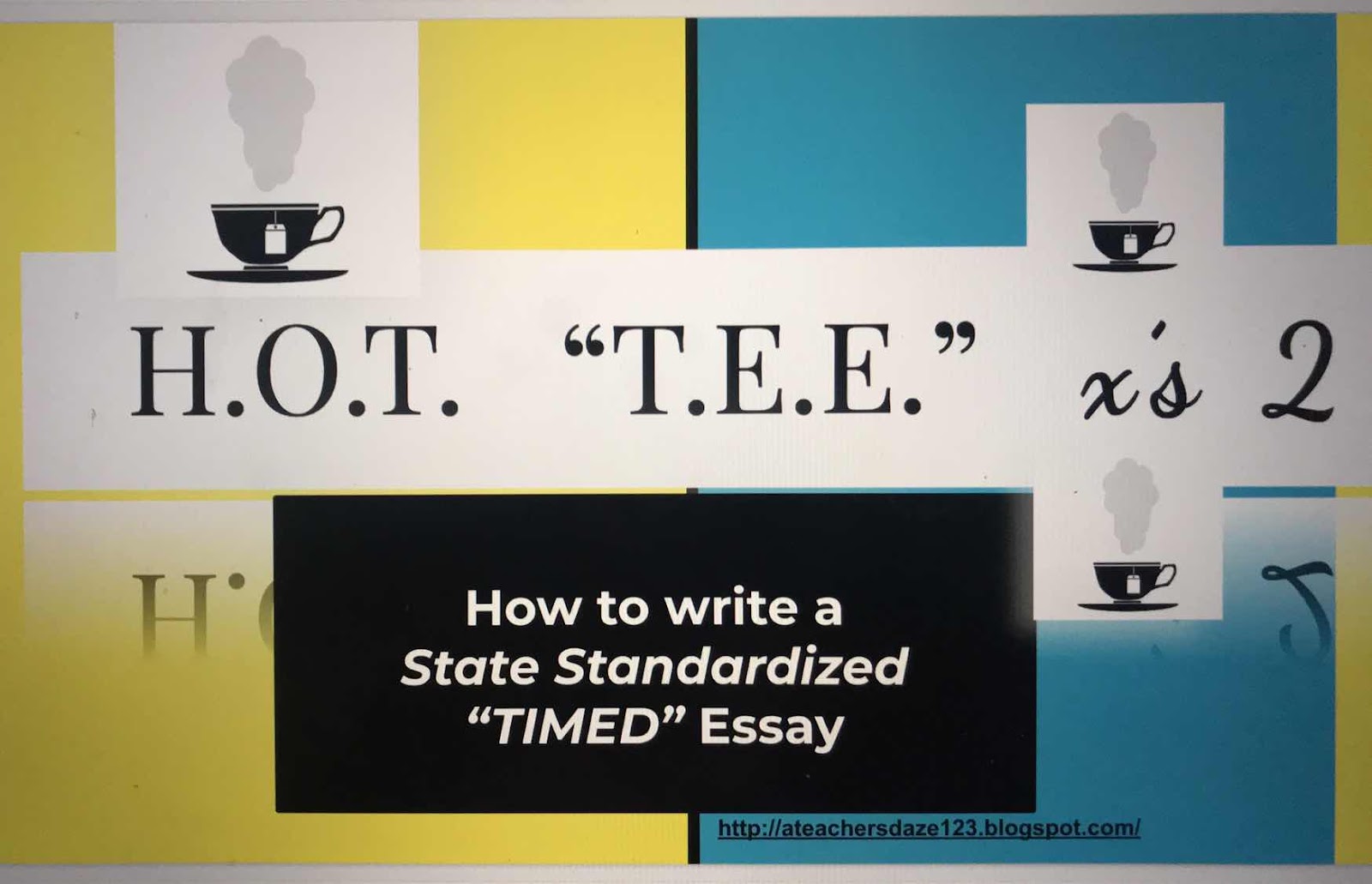“H.O.T. T.E.E. x’s 2”
I used this method with my students to help them prepare for the TIMED essay portion of the state writing test. I am working on a slide show that will soon be available on TPT. I will post when it is available. The slide show gives a basic over-view to help students understand how learning this acronym can save valuable time, as well as increase their test performance.



Which grades benefit from using “H.O.T. T.E.E. x’s 2.” ?
Elementary, middle or high school students who are required to write a TIMED essay can use some parts, if not all of this method. I know this is true because I have taught English from 6th to the 12th grade, for the past 28 years. 20 years of my teaching has been in secondary education. With the new Common Core or CCRS Curriculum, there is very little difference in teaching a senior to write an essay with textual evidence, than teaching students in senior English. The acronym stands for a part of the essay. The slide below gives a quick overview.
Why does this method work?
For most students, the hardest part about writing is “getting started!” We all know students who will dutifully copy notes, rewrite and correct sentences, or even finish a journal entry from an interesting writing prompt, will freeze when given the task of beginning an essay on their own. The picture below was taken in my classroom and it is, without a doubt, the chart I reference the most throughout the entire school year, not just for writing assignments.
This flip chart made from pipe and duct tape (and more duct tape 👀) has been around for several years. However, it becomes one of our classes’ mantras throughout the year! Before you know it, you will hear students echo the rest of your sentence when you say, “Okay, class. We have 3 minutes to complete this task and everyone knows the best way to get started... (and the class chimes in) is to simply begin!” This small, seemingly insignificant part, of my everyday classroom has made a difference in the way many of my students approach a task.
A Place to Begin
The HOT TEE X’s 2 Method gives students a clear starting point, regardless of the writing prompt. It also guides their writing, from introduction to conclusion.
The Best Thing...
The BEST thing about students using this method is the simple fact that they immediately have a place to start and do not waste valuable time trying to think of where to start and what to write.
Coming SOON...
I will be posting some materials for teachers to use, as well as some “examples” of the “before” and “after” writing of students, who learned to apply this method.
As a teacher who loves to see all students and teachers succeed, I am excited for teachers to try this method and give me feedback! I believe you will be pleased with the results!
STAY TUNED!
There will be more to follow! Thanks for reading and please take time to subscribe to my blog. I love to listen to other teacher’s ideas and opinions.
I love to communicate with others passionate about teaching, from homeschooling mom’s and dad’s to classroom teachers, public or private.
Sharing ideas that REALLY WORK in the classroom is golden! Every teacher waits for that magical moment when something they have done or said makes the light click on for their students.
HOT TEE X’s 2 has proven to be invaluable to so many of my students, as well as my colleagues, and I am excited to be able to put together this product for every teacher, who has ever struggled to teach students to write!
Comments
Post a Comment